ISO Certification and the Global Supply Chain
An increasingly global supply chain presents both risks and opportunities. Smart organizations in all industries are employing coordinated strategies and increasingly sophisticated tools to gain greater situational awareness and, ultimately, manage risk more effectively.
ISO and related certifications have proven to be highly adaptive tools for increasing transparency, streamlining processes and improving quality outcomes. In this article, we look at some of the ways they can be used to address the challenges and threats inherent in a globalized business environment.
Knowing the Risks
The more complex and multinational a supply base is, the more susceptible it will be to social, economical, environmental and internal instability. While each industry — and each organization — is different, thinking about risk in a broader context is essential to understanding and developing effective strategies for mitigating it.
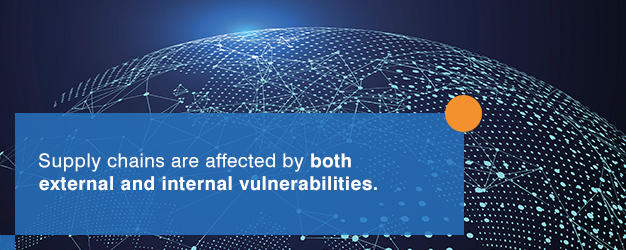
Supply chains are affected by both external and internal vulnerabilities. External risks encompass the events, trends and factors that have either upstream or downstream consequences for your supply chain. These can include:
-
Fluctuations in supply and demand: Consumer demand is the engine that drives the supply chain. Underestimating or overestimating the market for a product can cause ramifications among all suppliers. Conversely, issues sourcing raw materials will affect delivery times and profit margins.
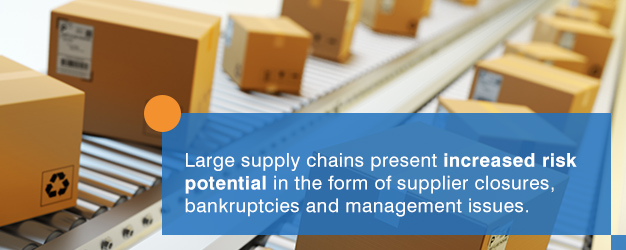
-
Business instability: Large supply chains present increased risk potential in the form of supplier closures, bankruptcies and management issues. A growing awareness of this uncertainty is evident in the fact that Tier 1 suppliers in industries such as automotive and aerospace are taking on increasing responsibility for sourcing and verifying parts.
-
Environmental and social insecurity: Threats posed by climate change, war and terrorism, political unrest and other factors all impact supply chain security. Generally speaking, suppliers who take advantage of cheap labor in developing markets are more susceptible to these risks than others.
Managing external risks requires big-picture thinking about where and how your supply chain operates. Internal risks, on the other hand, are based on the more practical, day-to-day decisions that affect your organization. Internal risk factors can include:
-
Staff turnover or loss of key management personnel
-
Disruption to internal processes and communication
-
Toxic corporate cultures
-
Poor emergency preparedness
Both internal and external risks can threaten an organization’s long-term viability. Fortunately, there are steps you can take to make your organization more resilient and ultimately more sustainable.
ISO Quality Management and Supply Chain Risk Mitigation
One of the features of the Annex SL structure adopted by the newest revisions of ISO 9001 and other quality management systems is an increased focus on risk. Annex SL places risk in an organizational context and requires registrants to anticipate and address vulnerabilities in the planning stage. In doing so, risk management becomes proactive rather than reactive, and businesses are better positioned to respond successfully to the challenges of working with a large or multinational supply chain.
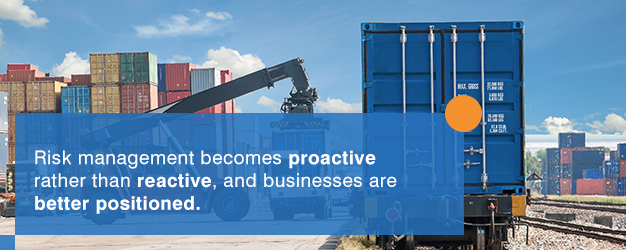
Looking at individual standards, we can see how they integrate supply chain risk management into both planning and operational activities.
ISO 9001 and Supply Chain Risk Management
ISO 9001:2015 is the ISO standard for general quality management. It outlines scalable, repeatable processes which facilitate sustainable growth as an organization takes on new opportunities or moves into new markets.
Among its other benefits, it is possible to use ISO 9001:2015 as a tool for proactive supply chain management. The standard emphasizes that all actors in an organization — from workers on the ground floor to C-level executives — must approach their jobs from a risk management perspective. Not only does this require an awareness of the potential vulnerabilities and uncertainties an organization faces, but it also actively makes them a factor in decision-making.
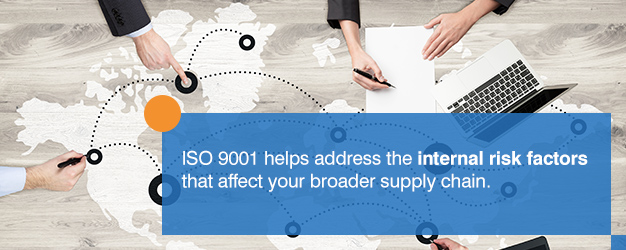
ISO 9001 helps address the internal risk factors that affect your broader supply chain. By engaging staff in quality management, it facilitates greater accountability and transparency and ensures internal continuity when key team members leave or move on to other roles. In doing so, organizations can develop more meaningful partnerships with suppliers, industry associations, nonprofits and other stakeholders to develop a streamlined, ethical and ultimately profitable supply chain.
Ensuring Business Continuity With ISO 22301
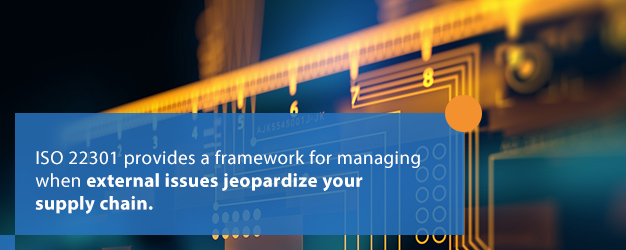 If ISO 9001 is all about developing the internal capacity to be a better partner, ISO 22301 provides a framework for managing when external issues jeopardize your supply chain. The standard outlines the development and deployment of an effective business continuity management system. Though its latest revision predates the Annex SL structure, an increased awareness of risk is inherently a key component of certification.
If ISO 9001 is all about developing the internal capacity to be a better partner, ISO 22301 provides a framework for managing when external issues jeopardize your supply chain. The standard outlines the development and deployment of an effective business continuity management system. Though its latest revision predates the Annex SL structure, an increased awareness of risk is inherently a key component of certification.
ISO 22301 is based on best practices for keeping your organization running in the face of technology failure, natural disaster, terror attack or social unrest or a sudden loss of critical resources. It requires identifying potential disruptions and assessing the probability of their occurrence, the amount of damage and the anticipated recovery time, among other things. From there, you can determine the products and services that are most critical to your business, as well as those that face the most risk, and develop targeted responses in the event of a disruption or make broader changes to eliminate risk altogether.
ISO 27001 and Information Security
Cybersecurity across the supply chain involves both internal and external risk factors, which is why it's important to have a dedicated information security management system (ISMS) in place if you plan on doing business with multiple stakeholders across wide geographic distances.
An ISO 27001-certified ISMS helps organizations protect digital assets, mitigate threats and improve business continuity in the event of a breach. It also helps you meet the various regulatory requirements for privacy and confidentially encountered when operating globally and allows you to develop more transparent relationships with both stakeholders and customers.
Getting Started
Supply chain risk management is a complex task that involves various systemic, procedural and protocol changes depending on the nature of your organization, your industry and the location of your suppliers. NQA can work with you to perform a Gap Analysis to determine the probable workload and timetable for implemented a quality management system, as well as, recommend reputable consultants for the certification process.
If you would like to know more about certification fill out our free Quick Quote form today and someone will get back to you within 24-28 hours or call 0800 052 2424 to speak to a member of our team about your certification requirements.
